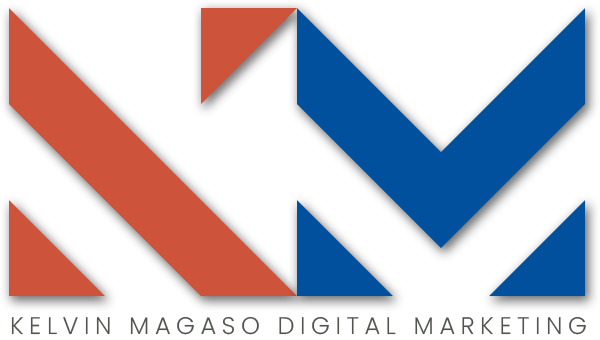Are you looking to maximize the effectiveness of your website’s landing pages? Landing pages play a crucial role in attracting and converting visitors into customers. A well-designed and optimized landing page can significantly improve your conversion rates and boost your online business. In this article, we will explore the best practices for landing page design and optimization to help you create compelling and high-converting landing pages.
Introduction
Landing pages are standalone web pages created with a specific goal in mind, such as capturing leads, promoting a product or service, or encouraging visitors to take a desired action. They are designed to provide a focused and tailored experience to the users, guiding them towards the intended conversion.
1. Understanding the Purpose of Landing Pages
Before diving into the design and optimization process, it’s essential to understand the purpose of your landing page. Clearly define the goal you want to achieve, whether it’s generating leads, driving sales, or increasing newsletter subscriptions. Having a clear objective will help you create a focused and targeted landing page.
2. Defining Your Target Audience
To create a successful landing page, you need to have a deep understanding of your target audience. Research their needs, preferences, and pain points. By tailoring your landing page content and design to resonate with your audience, you can significantly improve engagement and conversions.
3. Crafting a Compelling Headline
The headline is the first element visitors see when they land on your page. It should be attention-grabbing, concise, and clearly communicate the value proposition of your offering. A compelling headline sets the tone for the entire landing page and entices visitors to continue reading.
4. Creating Clear and Concise Copy
Your landing page copy should be clear, concise, and persuasive. Use bullet points, subheadings, and short paragraphs to make the content scannable and easy to digest. Highlight the benefits of your product or service and address any potential objections your audience may have.
5. Utilizing Eye-Catching Visuals
Visual elements, such as images, videos, or infographics, can significantly enhance the visual appeal of your landing page. Use high-quality visuals that are relevant to your offering and support the key message you want to convey. Visuals can help capture attention and evoke emotions, increasing the chances of conversion.
6. Designing an Intuitive Layout
A well-designed landing page should have an intuitive layout that guides visitors towards the call-to-action (CTA). Use clear and prominent placement for your CTA button, ensuring it stands out from the rest of the page. Organize the content logically and remove any unnecessary distractions that might divert the visitor’s attention.
7. Implementing a Strong Call-to-Action
Your call-to-action is the most critical element on your landing page. It should be persuasive, action-oriented, and clearly communicate what visitors should do next.
8. Optimizing for Mobile Devices
Optimizing your landing page for mobile devices is crucial. Mobile responsiveness is not only a user experience consideration but also an essential factor for search engine optimization.
9. A/B Testing and Continuous Improvement
To optimize your landing page’s performance, it’s essential to conduct A/B testing. A/B testing involves creating two versions of your landing page with slight variations and testing them to determine which one performs better. By analyzing the test results, you can identify what resonates best with your audience and make data-driven decisions to improve your landing page’s conversion rate continuously.
10. Incorporating Trust Signals
Trust signals are elements that instill trust and credibility in your visitors. Including trust signals on your landing page can help alleviate any concerns or doubts visitors may have and increase their confidence in taking the desired action.
11. Minimizing Distractions
When designing your landing page, it’s crucial to minimize distractions that may divert your visitors’ attention away from your intended conversion goal.
12. Streamlining the Conversion Process
Simplifying the conversion process is crucial for optimizing your landing page’s performance. The easier it is for visitors to complete the desired action, the higher the likelihood of conversions.
13. Monitoring and Analyzing Performances
To ensure your landing page is performing optimally, it’s important to monitor and analyze its performance regularly. Some key metrics to track are Conversion rate, Bounce rate, Time on page, Click-through rate (CTR), Heatmaps and user recordings.
Conclusion
Designing and optimizing landing pages is a continuous process aimed at maximizing conversions and achieving your business goals. By following the best practices outlined in this article, you can create compelling landing pages that engage visitors, drive conversions, and ultimately contribute to the success of your online presence.
FAQs
1. What is a landing page?
A landing page is a standalone web page designed for a specific marketing or conversion goal. It focuses on a single call-to-action and is optimized to drive visitors towards that goal, such as making a purchase, signing up for a newsletter, or filling out a form.
2. How important is landing page design?
Landing page design plays a crucial role in capturing visitors’ attention, conveying the value of your offering, and encouraging them to take action. A well-designed landing page improves user experience, increases trust, and boosts conversion rates.
3. What elements should I include on my landing page?
Key elements to include on your landing page are a compelling headline, clear and concise copy, persuasive visuals, a strong call-to-action, and trust signals such as testimonials or trust badges. Remember to keep the page focused and minimize distractions.
4. How can I optimize my landing page for search engines?
To optimize your landing page for search engines, ensure your content is relevant to the targeted keywords. Use meta tags, optimize headings, incorporate relevant keywords in the copy, and ensure fast loading speed and mobile responsiveness.
5. How can I test the effectiveness of my landing page?
A/B testing is an effective method to test different variations of your landing page and determine which one performs better. Test elements like headlines, CTAs, visuals, and layout to continually improve your landing page’s conversion rate.
